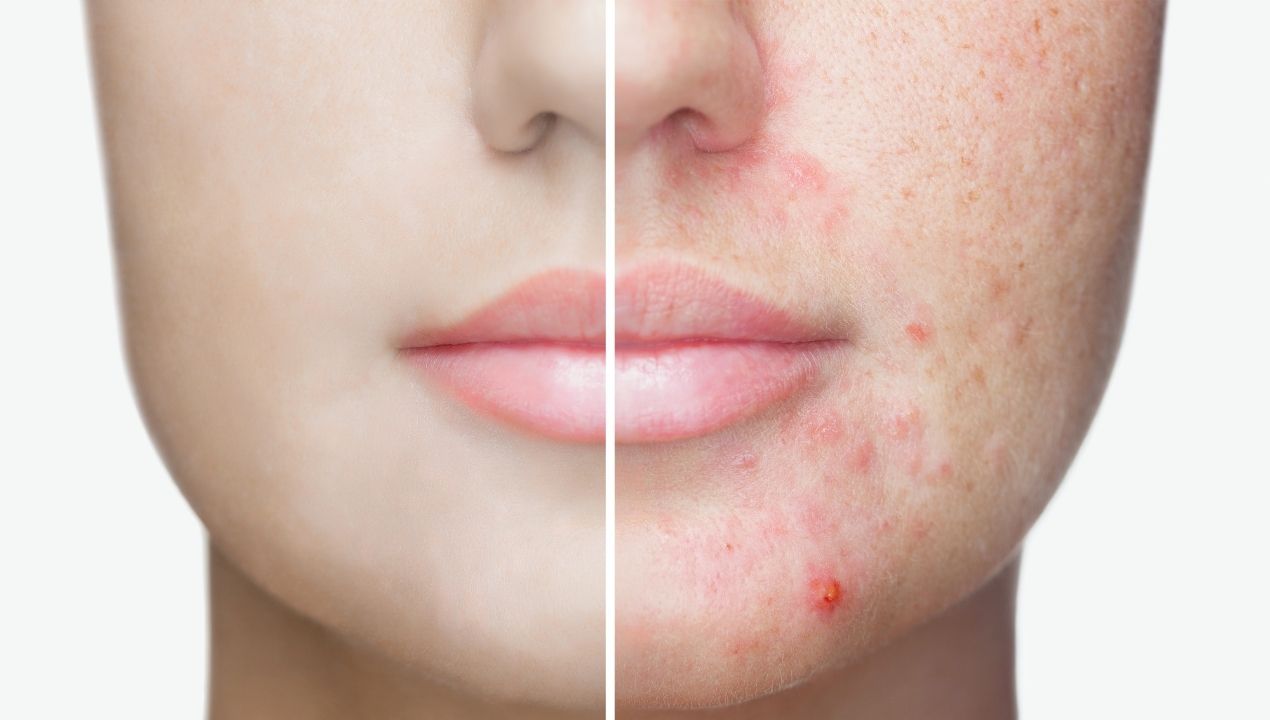Acne
Acne is a medical term for pimples, a most common skin condition in adolescents and adults occasionally. It involves sebaceous glands (oil-producing glands) present on the face, but can also occur on the arms, back, and chest; if untreated could cause scarring and pigmentation. Acne is known to be associated with low self-esteem and depression.
Reasons for acne formation
Excess sebum (oil) in the skin secreted by the sebaceous glands clog the pores along with the dead cells and bacteria leading to the formation of black heads (open comedones) and whiteheads (closed comedones). Overgrowth of bacteria, Cutibacterium acnes (formerly Propionibacterium acnes) produces inflammation in the pilosebaceous unit, leading to bumps (red pimples), pustules(yellow pimples) and cysts
Acne aggravating factors
• Family history
• Excess consumption of dairy products and foods with a high glycemic index such as sweets, pastries, some chocolates etc
• Hormonal imbalance: Oil-producing glands are susceptible to hormonal changes. During adolescence, they get enlarged leading to excess sebum production and also gets affected in PCOS (Poly Cystic Ovarian Syndrome)
• Long term self-medication with topical steroids for fairness
• Usage of oil based creams, make-up products which can clog the pores
• Using certain drugs such as steroids, anti-tubercular drugs (isoniazid), anti-epileptics (phenobarbitone)
• Dandruff
• Stress
Grading of acne
Grade 1- Comedones (black heads, white heads), very few papules
Grade 2- Comedones, Many Papules (Red bumps), Pustules (Yellow bumps), few nodules
Grade 3- comedones, papules, pustules, many nodules, few cysts
Grade 4- Nodulocystic acne
Treatment
Consultation with a dermatologist is necessary to control acne and to prevent post-acne scarring or pigmentation. Acne has to be differentiated from other acne looking conditions such as acneiform eruptions.
Medical treatment
The treatment includes topical medications (applied to the skin) or systemic (which is taken orally).
Topical treatment includes benzoyl peroxide, retinoids (tretinoin, adaplene), azelaic acid and clindamycin creams. Since these medications may initially produce dryness and irritation, it is advised to be used cautiously under dermatologist supervision. Depending upon your acne severity, dermatologists may also prescribe oral medications such as azithromycin, doxycycline, minocycline, and Retinoids (Isotretinoin). If the triggering factor for acne is PCOS, then hormonal therapy such as oral contraceptive pills, anti-androgens would be needed.
Procedural Treatment
For the faster acne clearance, dermatological procedures like chemical peels and laser would be required.
Chemical peels: Chemical peels are very effective in controlling acne and would also be useful in reducing acne-induced pigmentation. Salicylic acid, glycolic acid, and mandelic acid peels are frequently used. Depending upon the acne severity, about 4 to 6 sessions of such peels required at an interval of 2 to 3 weeks for optimal results.
Lasers
Intense pulse light(IPL), Q Switch nd:yag laser and blue light therapy have been found to be useful in the treatment of acne.


